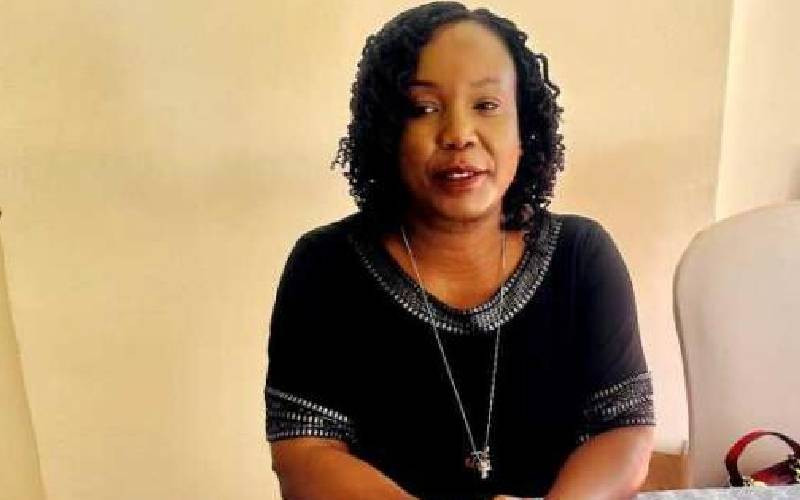
NAIROBI: The Kenyan Government has set the economy on an ambitious target of 7 per cent annual growth as part of Vision 2030. The economy however has grown by over 7 per cent only four times in the last 50 years.
Kenya’s economy remains among the poorest 25 per cent of countries in the world. Investment can stimulate short and medium-term growth, but this requires high levels of savings. However, the 2016 Country Economic Memorandum (CEM) spells out the challenge for the country: not only are Kenya’s savings low, they also lag behind those of peers, some of which even have lower per capita incomes.
Since 1980s, Kenya’s savings rate has declined. Kenya needs to double its rate of savings to achieve its ambitious 7 per cent growth. This is no mean feat given that only China and a few other resource-rich countries have achieved such results. Why don’t Kenyans save more?
Investment in Kenya has risen over the past decade. However, this increase has been financed primarily from foreign savings, while domestic savings only started to increase after 2011. Public savings have been low over the past three decades, and this trend is very different from most peer economies, which have public savings rates that are several times higher. Kenyan oil production and exports are not expected to occur before 2020-2022, so increasing public and private savings will be important in the interim.
According to the 2014 Global Findex Database, Kenya tops the list of African countries with ease of access to financial services- eight out of 10 adults use a financial account.
This high financial inclusion rate is credited to the use of mobile money, which has made banking services available to previously unbanked populations, including the rural poor.
Despite the strengths of Kenya’s financial sector and innovations such as M-Pesa and M-Shwari, several factors, including youth unemployment, the negative real deposit rate, and low public savings explain the low domestic savings.
What would be the policy agenda for increasing savings in Kenya?
The CEM emphasises the need to mobilise domestic savings (both public and private) by (i) strengthening Kenya’s fiscal performance by lowering recurrent spending and increasing tax revenues; (ii) reforming the pension system; and (iii) recognising the role played by Savings and Credit Cooperatives (Saccos), especially in rural areas, and improving their operational efficiency.
Kenya can promote public savings by lowering the overall public sector wage bill. A 2013 study by the IMF and Independent Parliamentary Standards Authority ranked Kenyan legislators as the second-highest paid lawmakers in the world. The Members of Parliaments’ basic pay, which excludes allowances, is 76 times the country’s GDP per capita.
The Kenyan government can incentivise households to save through formal contributory pension systems such as the pay-as-you-go Civil Service Pension Scheme, the National Social Security Fund (NSSF), and various occupational pension funds. Moving from a pay-as-you-go to a funded public pension scheme will create a significant pool of assets.
Saccos have grown rapidly and increasingly attracted savings, but their potential is still low. Their use for savings amounts to less than half of those of commercial banks. While the value and reach of non-deposit-taking and unregulated Saccos are not known, the Sacco Societies Regulatory Authority (Sasra) has 180 deposit taking Saccos under its jurisdiction, with a total asset base of Sh301 billion.
Saccos comprising teachers, parastatals and State officials are among the largest in the country. However, Sacco customers do not have the same access to their savings as they do with their bank deposits. They cannot write a cheque from their account or use an ATM, although recent changes in the policy environment are addressing this. This limits the utility of their savings accounts.
Reforms that move towards the integration and prudentially supervised Saccos into the mainstream financial sector could boost savings rates for a large proportion of the population. What matters is that savings and tax revenues are channelled to productive investments. According to the CEM, Kenya is ranked on the low end of the public investment management quality spectrum. Inadequate prioritisation of public investment projects, absence of a system to track project performance, and weak implementation could be the cause. For public saving, a key priority for the Government is to increase infrastructure investment.
Households should mobilise their savings in Saccos to small business investment opportunities, including in the jua kali. Corporations and enterprises should create the right conditions to help expand their businesses. Besides, people and companies will save and invest more if they trust the institutions that manage their money.
One thing is clear - Kenya’s economy needs a turnaround in savings.
 The Standard Group Plc is a multi-media organization with investments in media
platforms spanning newspaper print operations, television, radio broadcasting,
digital and online services. The Standard Group is recognized as a leading
multi-media house in Kenya with a key influence in matters of national and
international interest.
The Standard Group Plc is a multi-media organization with investments in media
platforms spanning newspaper print operations, television, radio broadcasting,
digital and online services. The Standard Group is recognized as a leading
multi-media house in Kenya with a key influence in matters of national and
international interest.
 The Standard Group Plc is a multi-media organization with investments in media
platforms spanning newspaper print operations, television, radio broadcasting,
digital and online services. The Standard Group is recognized as a leading
multi-media house in Kenya with a key influence in matters of national and
international interest.
The Standard Group Plc is a multi-media organization with investments in media
platforms spanning newspaper print operations, television, radio broadcasting,
digital and online services. The Standard Group is recognized as a leading
multi-media house in Kenya with a key influence in matters of national and
international interest.










